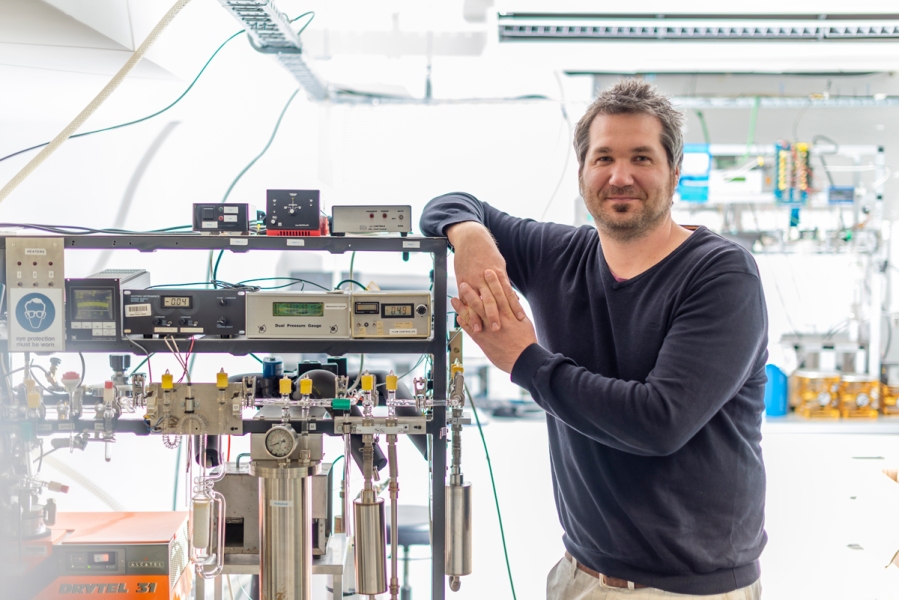Peter Sperlich needs a strong south-westerly and a cast iron stomach for his next scientific mission.
The NIWA atmospheric scientist is spending two weeks on board research vessel Kaharoa off the Fiordland coast next month, an area known as having some of the roughest seas around New Zealand.
Dr Sperlich, and NIWA principal technician Ross Martin, will be collecting air samples as part of research into the native Fiordland forest to determine exactly how much carbon it is absorbing. To do that they need fresh ocean air continuously blowing on to land for more than a day, something only likely to occur once or possibly twice a week.
Previous NIWA research suggested the forest is acting as a huge carbon sink, absorbing a lot more of the greenhouse gas carbon dioxide than previously thought. This was a surprise discovery that potentially changes our view on the role of native forests in the carbon cycle. The discovery led to the NIWA-led CarbonWatch NZ project which aims to build the world’s first complete national scale picture of a country’s carbon profile based on atmospheric data.
Air sampling began in Fiordland about 18 months ago, focusing on two sites, one inland and one coastal. Along the way there have been a number of setbacks. The remote location has been challenging enough, but sampling has also been severely hampered, first by the impact of the Australian bush fires, then by flooding in Southland. COVID also made further delays inevitable. However, the difficulties have only increased Dr Sperlich’s determination to find out what is driving the Fiordland carbon sink.
Using RV Kaharoa as an additional sampling platform, the plan is to measure the natural variability of carbon dioxide in the oceanic air arriving at Fiordland’s coast.
While Dr Sperlich is collecting samples while at sea, colleagues Tony Bromley and Sally Gray will be doing the same at two land-based sites for comparison. Some 20 samples will be taken every 24 hours at both sites.
These measurements will enable scientists to study the carbon budget of the forest, which is the balance of carbon that is absorbed and released by Fiordland’s soils and vegetation.
Dr Sperlich is also keen to learn more about the role the fiords play in Fiordland’s carbon budget. So when the wind isn’t playing ball on the voyage, the team will head into the fiords to take water samples to test for dissolved inorganic carbon. Dr Sperlich says that will provide scientists with “another important part of the carbon cycle puzzle”.
“We know that the atmosphere and the ocean communicate with one another, but the magnitude to which this happens within Fiordland waters is one of the big unknowns.”
The land-based measurements are likely to continue for the next 18 months to cover an entire growing season.
Dr Sperlich says the work highlights the value of natural ecosystems.
“This forest is potentially providing a huge ecosystem service from a global warming and ocean acidification point of view. If it’s doing what we think it’s doing, it’s even more important to understand why it’s doing this, and to protect it as best as we can.”
CarbonWatch NZ is a collaboration between NIWA, GNS Science, Manaaki Whenua Landcare Research, Auckland Council and the University of Waikato.


